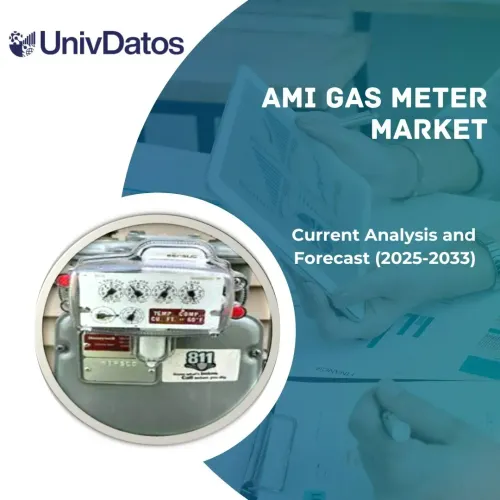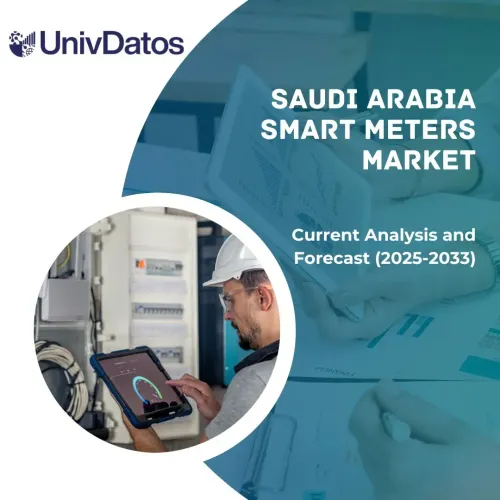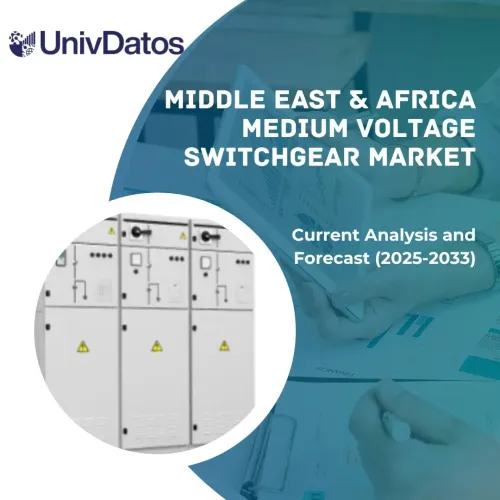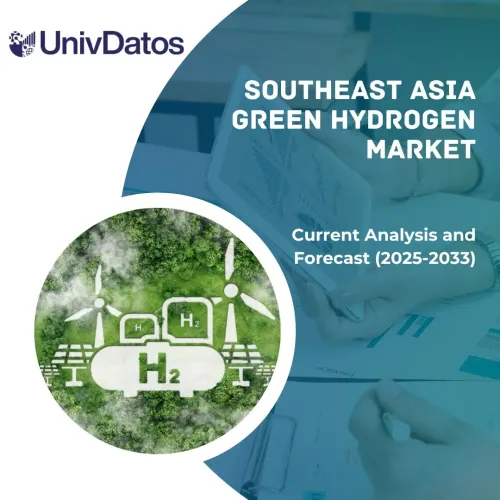- Accueil
- À propos de nous
- Industrie
- Services
- Lecture
- Contactez-nous
Marché des échangeurs de chaleur : Analyse actuelle et prévisions (2023-2030)
Accent sur le type (mécanique, électrochimique, thermique et chimique) ; application (transport et gestion du réseau) ; et région/pays
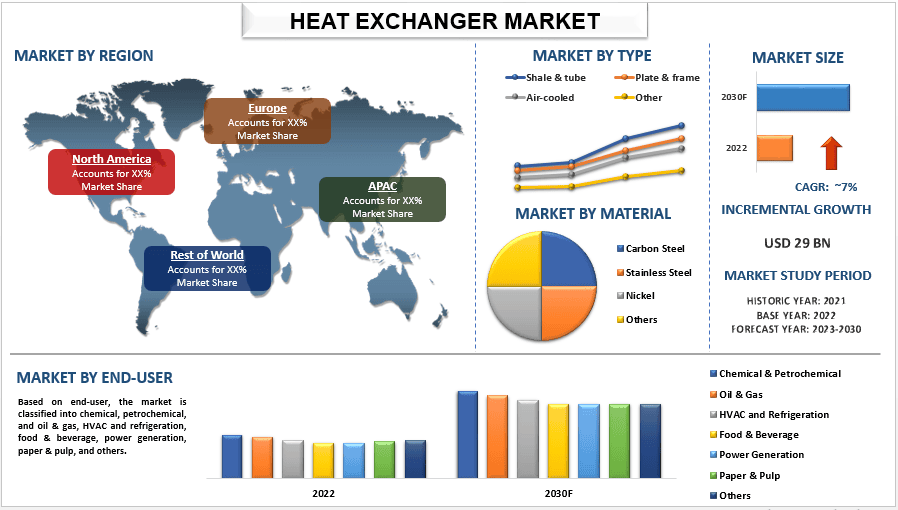
Le marché des échangeurs de chaleur était évalué à environ 29 milliards de dollars US en 2022 et devrait croître à un TCAC élevé d'environ 7 % au cours de la période de prévision 2023-2030. Un échangeur de chaleur est un dispositif utilisé pour transférer l'énergie thermique (enthalpie) entre deux ou plusieurs fluides ou entre le matériau et le fluide, à des températures et des contacts thermiques différents. Le marché des échangeurs de chaleur est en hausse en raison de la croissance rapide de l'industrie électrique et du secteur industriel dans diverses régions. De plus, la croissance de l'industrie agroalimentaire et la demande croissante de l'industrie chimique, l'innovation technologique et l'attention croissante portée à l'amélioration des normes d'efficacité devraient stimuler le marché au cours de la période de prévision. Par exemple, en 2022, Alfa Laval a annoncé le nouvel échangeur de chaleur à plaques brasées Alfa Laval AC65 lors du premier événement de lancement en ligne net zéro, présentant une nouvelle façon de penser en matière d'efficacité énergétique, d'énergie propre et de solutions commerciales circulaires. Le nombre croissant de centrales électriques dans le monde représente une opportunité croissante pour le marché des échangeurs de chaleur. Par exemple, selon la World Nuclear Association, en 2021, il y a 443 réacteurs nucléaires en exploitation dans le monde, avec une capacité installée totale de 392,4 GW.
ALFA LAVAL, API Heat Transfer, Danfoss, General Electric, HISAKA WORKS LTD., IHI Corporation, Johnson Controls, Kelvion Holding GmbH, Koch Heat Transfer Company, Boyd. Plusieurs fusions et acquisitions ainsi que des partenariats ont été entrepris par ces acteurs pour faciliter l'accès des clients à des produits/technologies de haute technologie et innovants.
Aperçus présentés dans le rapport
« Parmi les matériaux, le segment de l'acier inoxydable devrait détenir une part importante du marché et devrait connaître une croissance significative au cours de la période de prévision »
Basé sur le matériau, le marché des échangeurs de chaleur est divisé en acier au carbone, acier inoxydable, nickel et autres. L'acier inoxydable a capté une part importante du marché et devrait connaître une croissance significative au cours de la période de prévision. Cela est principalement dû à ses caractéristiques bénéfiques par rapport aux autres, telles que la résistance à la corrosion dans une large gamme de niveaux de pH, la légèreté, la conductivité thermique élevée et l'absence d'exigence de fluides spéciaux, car il est compatible avec de l'eau propre ordinaire. Ainsi, ces facteurs conduisent à la croissance du marché des échangeurs de chaleur.
« Parmi les utilisateurs finaux, le segment chimique représente une part de marché considérable sur le marché mondial des échangeurs de chaleur »
Basé sur l'utilisateur final, le marché est classé en chimie et pétrochimie, pétrole et gaz, chauffage, ventilation et climatisation et réfrigération, alimentation et boissons, production d'électricité, papier et pâte à papier, et autres. Récemment, le segment chimique représente une part de marché considérable sur le marché mondial des échangeurs de chaleur. Les échangeurs de chaleur dans les produits chimiques sont utilisés dans le processus de fabrication, qui comprend la condensation des solvants, la récupération de la chaleur du benzène, le refroidissement des circuits d'eau, le refroidissement des hydrocarbures, le chauffage et le refroidissement des produits intermédiaires, le chauffage et le refroidissement des réacteurs et les processus de production.
« La région Asie-Pacifique détient une part de marché importante »
La région Asie-Pacifique détient une part de marché importante en raison de l'augmentation des opérations industrielles dans les pays en développement tels que la Chine, l'Inde, etc. L'industrialisation et l'urbanisation rapides dans des pays comme la Chine, l'Inde et les nations d'Asie du Sud-Est ont entraîné une augmentation de la demande d'énergie et de développement des infrastructures, stimulant le besoin d'échangeurs de chaleur dans divers secteurs tels que la production d'électricité, le pétrole et le gaz et la transformation chimique. La présence d'une base de fabrication robuste, l'expansion des secteurs industriels et l'augmentation des investissements dans les industries clés ont créé un environnement de marché favorable aux échangeurs de chaleur dans la région Asie-Pacifique. Par exemple, en août 2021, les gouvernements provinciaux chinois ont approuvé la construction de 24 nouveaux projets de centrales électriques au charbon, ce qui a ajouté une capacité totale de 5,2 GW, y compris les trois centrales électriques au charbon à grande échelle. Ce facteur a stimulé la demande d'échangeurs de chaleur dans le pays et la région.
Couverture du rapport sur le marché des échangeurs de chaleur
Attribut du rapport | Détails |
Année de base | 2022 |
Période de prévision | 2023-2030 |
Dynamique de croissance | Accélération à un TCAC de 7 % |
Taille du marché 2022 | 29 milliards de dollars US |
Analyse régionale | Amérique du Nord, Europe, APAC, Reste du monde |
Principale région contributrice | La région Asie-Pacifique devrait croître au TCAC le plus élevé au cours de la période de prévision |
Principaux pays couverts | États-Unis, Canada, Allemagne, Royaume-Uni, Espagne, France, Chine, Japon, Australie et Inde |
Entreprises profilées | ALFA LAVAL, API Heat Transfer, Danfoss, General Electric, HISAKA WORKS LTD., IHI Corporation, Johnson Controls, Kelvion Holding GmbH, Koch Heat Transfer Company, Boyd |
Portée du rapport | Tendances du marché, moteurs et contraintes ; Estimation et prévision des revenus ; Analyse de la segmentation ; Impact de la COVID-19 ; Analyse de l'offre et de la demande ; Paysage concurrentiel ; Profilage d'entreprise |
Segments couverts | Par type, par matériau ; Par utilisateur final ; Par région/pays |
Raisons d'acheter ce rapport :
- L'étude comprend une analyse de la taille et des prévisions du marché validée par des experts clés authentifiés du secteur
- Le rapport présente un aperçu rapide de la performance globale de l'industrie en un coup d'œil
- Le rapport couvre une analyse approfondie des principaux acteurs de l'industrie en mettant l'accent sur les principales données financières de l'entreprise, le portefeuille de produits, les stratégies d'expansion et les développements récents
- Examen détaillé des moteurs, des contraintes, des principales tendances et des opportunités qui prévalent dans l'industrie
- L'étude couvre de manière exhaustive le marché à travers différents segments
- Analyse approfondie au niveau régional de l'industrie
Options de personnalisation :
Le marché mondial des échangeurs de chaleur peut être personnalisé davantage selon les exigences ou tout autre segment de marché. En outre, UMI comprend que vous pouvez avoir vos propres besoins commerciaux, n'hésitez donc pas à nous contacter pour obtenir un rapport qui correspond parfaitement à vos exigences.
Table des matières
Méthodologie de recherche pour l'analyse du marché mondial des échangeurs de chaleur (2023-2030)
L'analyse du marché historique, l'estimation du marché actuel et la prévision du marché futur du marché mondial des échangeurs de chaleur ont été les trois principales étapes entreprises pour créer et analyser l'adoption des échangeurs de chaleur dans les principales régions du monde. Une recherche secondaire exhaustive a été menée pour recueillir les chiffres du marché historique et estimer la taille actuelle du marché. Deuxièmement, pour valider ces informations, de nombreuses conclusions et hypothèses ont été prises en considération. De plus, des entretiens primaires exhaustifs ont également été menés avec des experts de l'industrie à travers la chaîne de valeur du marché mondial des échangeurs de chaleur. Après l'hypothèse et la validation des chiffres du marché par le biais d'entretiens primaires, nous avons utilisé une approche descendante/ascendante pour prévoir la taille complète du marché. Par la suite, des méthodes de ventilation du marché et de triangulation des données ont été adoptées pour estimer et analyser la taille du marché des segments et sous-segments auxquels l'industrie se rapporte. La méthodologie détaillée est expliquée ci-dessous :
Analyse de la taille du marché historique
Étape 1 : Étude approfondie des sources secondaires :
Une étude secondaire détaillée a été menée pour obtenir la taille du marché historique du marché des échangeurs de chaleur à partir de sources internes à l'entreprise telles que les rapports annuels et les états financiers, les présentations de performance, les communiqués de presse, etc., et de sources externes, notamment les revues, les actualités et les articles, les publications gouvernementales, les publications des concurrents, les rapports sectoriels, les bases de données tierces et d'autres publications crédibles.
Étape 2 : Segmentation du marché :
Après avoir obtenu la taille du marché historique du marché des échangeurs de chaleur, nous avons mené une analyse secondaire détaillée pour recueillir des informations sur le marché historique et partager les différents segments et sous-segments pour les principales régions. Les principaux segments inclus dans le rapport sont le type, le matériau et l'utilisateur final. D'autres analyses au niveau des pays ont été menées pour évaluer l'adoption globale des modèles de test dans cette région.
Étape 3 : Analyse des facteurs :
Après avoir acquis la taille du marché historique des différents segments et sous-segments, nous avons mené une analyse des facteurs détaillée pour estimer la taille actuelle du marché des échangeurs de chaleur. De plus, nous avons effectué une analyse des facteurs à l'aide de variables dépendantes et indépendantes telles que divers matériaux d'échangeurs de chaleur et l'utilisateur final des échangeurs de chaleur. Une analyse approfondie a été menée pour les scénarios de demande et d'offre, en tenant compte des principaux partenariats, fusions et acquisitions, expansions commerciales et lancements de produits dans le secteur du marché des échangeurs de chaleur à travers le monde.
Estimation et prévision de la taille actuelle du marché
Taille actuelle du marché : Sur la base des informations exploitables tirées des 3 étapes ci-dessus, nous sommes arrivés à la taille actuelle du marché, aux principaux acteurs du marché mondial des échangeurs de chaleur et aux parts de marché des segments. Tous les pourcentages de parts requis et les ventilations du marché ont été déterminés à l'aide de l'approche secondaire susmentionnée et ont été vérifiés par le biais d'entretiens primaires.
Estimation et prévision : Pour l'estimation et la prévision du marché, des pondérations ont été attribuées aux différents facteurs, notamment les moteurs et les tendances, les contraintes et les opportunités offertes aux parties prenantes. Après avoir analysé ces facteurs, les techniques de prévision pertinentes, c'est-à-dire l'approche descendante/ascendante, ont été appliquées pour arriver à la prévision du marché d'environ 2030 pour différents segments et sous-segments sur les principaux marchés mondiaux. La méthodologie de recherche adoptée pour estimer la taille du marché comprend :
- La taille du marché de l'industrie, en termes de valeur (en USD) et le taux d'adoption du marché des échangeurs de chaleur sur les principaux marchés nationaux
- Tous les pourcentages de parts, les ventilations et les répartitions des segments et sous-segments du marché
- Les principaux acteurs du marché mondial des échangeurs de chaleur en termes de solutions proposées. Également, les stratégies de croissance adoptées par ces acteurs pour être compétitifs sur le marché en croissance rapide
Validation de la taille et de la part du marché
Recherche primaire : Des entretiens approfondis ont été menés avec les principaux leaders d'opinion (KOL), y compris les cadres supérieurs (CXO/VP, responsable des ventes, responsable du marketing, responsable des opérations et responsable régional, responsable national, etc.) dans les principales régions. Les résultats de la recherche primaire ont ensuite été résumés et une analyse statistique a été effectuée pour prouver l'hypothèse énoncée. Les informations issues de la recherche primaire ont été consolidées avec les résultats secondaires, transformant ainsi l'information en informations exploitables.
Répartition des participants primaires dans différentes régions
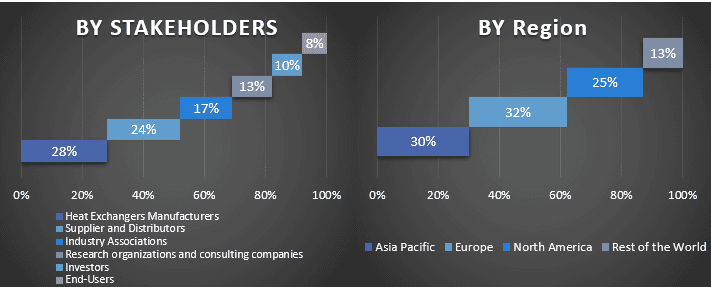
Ingénierie du marché
Une technique de triangulation des données a été utilisée pour compléter l'estimation globale du marché et pour arriver à des chiffres statistiques précis pour chaque segment et sous-segment du marché mondial des échangeurs de chaleur. Les données ont été divisées en plusieurs segments et sous-segments après avoir étudié divers paramètres et tendances dans les domaines du type, du matériau et des utilisateurs finaux de l'échangeur de chaleur.
L'objectif principal de l'étude du marché mondial des échangeurs de chaleur
Les tendances actuelles et futures du marché mondial des échangeurs de chaleur ont été identifiées dans l'étude. Les investisseurs peuvent obtenir des informations stratégiques pour fonder leur discrétion sur les investissements à partir de l'analyse qualitative et quantitative effectuée dans l'étude. Les tendances actuelles et futures du marché ont déterminé l'attractivité globale du marché au niveau régional, offrant une plateforme aux participants industriels pour exploiter le marché inexploité afin de bénéficier d'un avantage de premier arrivé. Les autres objectifs quantitatifs des études comprennent :
- Analyser la taille actuelle et prévue du marché des échangeurs de chaleur en termes de valeur (en USD). Analyser également la taille actuelle et prévue du marché des différents segments et sous-segments
- Les segments de l'étude comprennent les domaines du type, du matériau et de l'utilisateur final.
- Définir et analyser le cadre réglementaire de l'industrie du marché des échangeurs de chaleur.
- Analyser la chaîne de valeur impliquée avec la présence de divers intermédiaires, ainsi qu'analyser les comportements des clients et des concurrents de l'industrie.
- Analyser la taille actuelle et prévue du marché des échangeurs de chaleur pour la région principale.
- Les principales régions étudiées dans le rapport comprennent l'Asie-Pacifique, l'Europe, l'Amérique du Nord et le reste du monde.
- Profils d'entreprise du marché des échangeurs de chaleur et les stratégies de croissance adoptées par les acteurs du marché pour se maintenir sur le marché en croissance rapide
- Analyse approfondie au niveau régional de l'industrie
Connexes Rapports
Les clients qui ont acheté cet article ont également acheté

